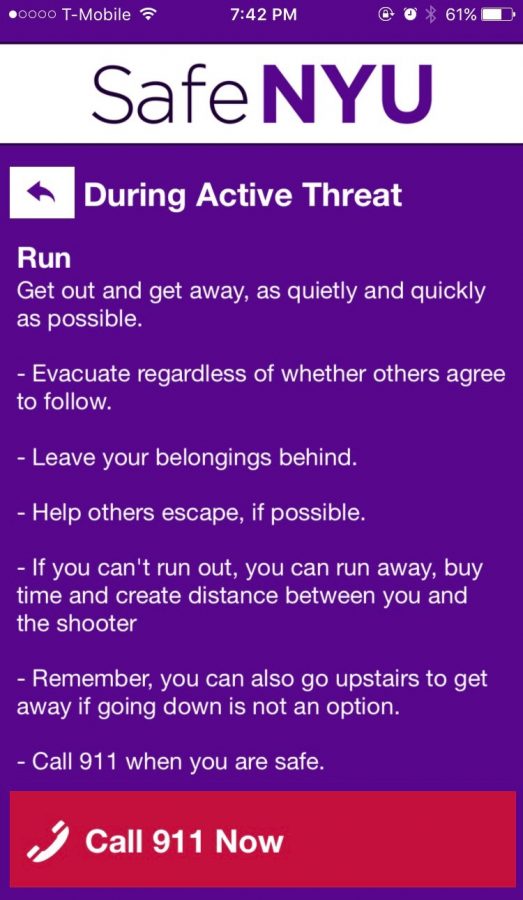Public Safety Tests Alert System to Prepare for Possible Emergency
February 23, 2018
The day after the shooting at Marjory Stoneman Douglas High School in Parkland, Florida earlier this month, NYU students received a rare email from NYU’s Department of Public Safety testing the university’s emergency notification system.
In response to the deadly school shooting, grade schools and college campuses across the nation have been forced to reevaluate their own safety procedures.
Since the week of the attack, the NYU Public Safety has tested both its text and email emergency alert systems.
According Public Safety Communications Manager Matthew Shelosky, NYU Alert sends notifications through texts, emails and the Mobile Campus Safety App — SafeNYU — in the event of a campus emergency or imminent threat.
“Our Emergency Management and Communications staff monitor and manage the NYU Alert system,” Shelosky said in an interview with WSN.
NYU Public Safety relies on open source information feeds such as news, social media and other publicly available databases to receive emergency information. The staff has also forged key partnerships with local, state and federal agencies throughout their network. Shelosky said that these relationships help them identify potential risks and keep the NYU community informed.
“If an active threat occurred on campus, NYU would rapidly notify the NYPD and other New York City agencies to respond, while simultaneously activating the NYU Alert system,” Shelosky said. “It is important that students, faculty and staff provide up-to-date contact information in systems like Albert and PeopleLink as this is what NYU utilizes to populate the emergency notification system.”
NYU Public Safety also encourages students, faculty and staff to download the Safe NYU app, as the department uses it to send push notifications to phones during an emergency, as well as educate and prepare students and faculty for a myriad of hazards, including severe weather, bomb threats and active shooter threats.
Shelosky said operating the alert system can be stressful for members f Public Safety, but there is little room for mistakes when sending out the information.
To avoid blunders such as the false missile alert that was sent to residents of Hawaii in January, Public Safety has multiple checks on the system’s operation.
“We worked proactively to ensure our messages are verified and sourced correctly, as well as accurately, while employing a robust review process that includes supervisory approval before messages are transmitted,” Shelosky said.
Email Christine Lee at [email protected].
Correction, Feb. 26: A previous version of this article incorrectly said that Shelosky had said that operating the alert system can be stressful for members of Public Safety and that there is little room foe mistakes when sending out information. This was incorrectly attributed and has since been removed. WSN regrets the error.
























































































































































